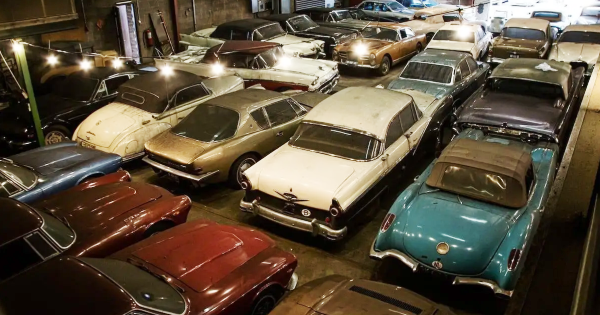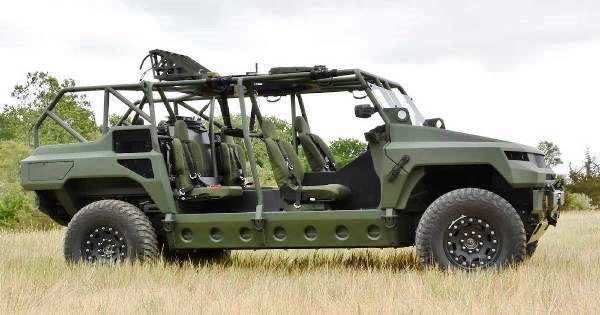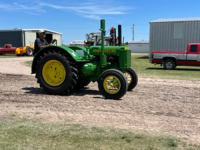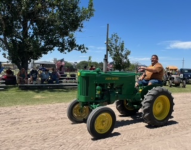You are using an out of date browser. It may not display this or other websites correctly.
You should upgrade or use an alternative browser.
You should upgrade or use an alternative browser.
Motor Heads: Cars, Trucks, Tractors & Hvy Equip.
Welcome to the Precious Metals Bug Forums
Welcome to the PMBug forums - a watering hole for folks interested in gold, silver, precious metals, sound money, investing, market and economic news, central bank monetary policies, politics and more.
Why not register an account and join the discussions? When you register an account and log in, you may enjoy additional benefits including no Google ads, market data/charts, access to trade/barter with the community and much more. Registering an account is free - you have nothing to lose!
chrisflhtc
Fly on the Wall
- Messages
- 20
- Reaction score
- 33
- Points
- 48
For the beauty of itNever understood why they painted trucks up like that.
spinalcracker
Ground Beetle
- Messages
- 566
- Reaction score
- 1,000
- Points
- 278
I'd like to meet his tailor.
his tailor does a lot of work in London
- Messages
- 27,067
- Reaction score
- 4,839
- Points
- 288
A Tractor Tribute: See The Beautifully Restored 1947 W-9 McCormick Deering
Feb 9, 20236:52
We head to central Texas for the story of a beautiful W-9 McCormick Deering farm tractor like one that was used in the rice fields of the Lone Star State back in the 1950s. Bernard Selensky restored this tractor to honor the late Neil Burnside, a World War Two B-29 pilot and rice farmer who helped out with work opportunities back in Bernard's high school and college days. The W-9 tractor was in the International Harvester line up from 1940 to 1953. Burnside farmed about 500 acres of rice with four W-9 tractors.
Channel:
- Messages
- 27,067
- Reaction score
- 4,839
- Points
- 288
Liebherr T-252 Documentary
Mar 5, 2023A look at a HUGE 2003 LIEBHERR T-252 200-ton class mining truck. Earn a lot from PAmining? Then join the channel today for more mining experience! 11:59
Chapter List:
00:00 Introduction History
01:08 Engine Options/ Power
02:13 Front Suspension
03:06 Service Fluid Capacities
04:03 Alternator/ Drive Train
04:52 Dimensions
06:41 Cab/ Controls
10:05 Braking System/ Rear Suspension
11:15 Payload
11:34 Weight/ Conclusion History
Channel:
- Messages
- 27,067
- Reaction score
- 4,839
- Points
- 288
- Messages
- 27,067
- Reaction score
- 4,839
- Points
- 288
Homemade Tank Part 1 (Basic Frame)
Jun 26, 2016This is the first part in the series of the construction of my homemade tank! in this video I review the basic frame construction, the road wheel arms, and introduce the suspension plan. Thanks for watching! 6:53
If you want to watch all the vids in the series go to the channel, click on playlist, and then click on homemade tank. Enjoy.
Channel
- Messages
- 27,067
- Reaction score
- 4,839
- Points
- 288
Good for automotive world news:

 macsmotorcitygarage.com
macsmotorcitygarage.com
Website:
 macsmotorcitygarage.com
macsmotorcitygarage.com
________________________________________
9:35
Autoline provides daily global automotive news. Top auto executive interviews. Automotive insight & analysis. EV, AV & ICE technology, car sales & financial earnings, new car reviews.
0:00 Indonesia Gets More EV Investment
0:44 Porsche Sales Up, But EVs Down
1:26 Xpeng Copying Tesla Architecture
3:00 VW Pulls Camo Off ID.7
4:23 Lancia Concept Hints At Its Next 10 Years
5:34 Volvo Increases Rear Seat Luxury
7:01 i7 M70 is BMW's Most-Powerful EV
7:59 Ram Leaves Little Doubt About Mid-Size EV
Story Links:
VW Joins Indonesia Nickel Mining Project: https://www.reuters.com/business/auto...
Porsche Sales: https://newsroom.porsche.com/en/2023/...
New Xpeng Platform: https://www.reuters.com/business/auto...
VW ID. 7: https://media.vw.com/en-us/releases/1739
Wild Lancia Concept: https://www.media.stellantis.com/em-e...
Volvo EX90 Rear Seat: https://www.media.volvocars.com/globa...
BMW i7 M70: https://www.bmwusanews.com/newsreleas...
Ram Mid-Size Truck EV: https://www.greencarreports.com/news/...
Read the transcript here: http://www.autoline.tv/journal/?p=869...
Channel: https://www.youtube.com/@AutolineDetroit/videos

MCG Executive Briefing for April 17, 2023 - Mac's Motor City Garage
More than 230 vintage and classic cars hidden away in a former church in Holland are now being offered for sale. Get all the latest auto industry news in the Executive Briefing. Today’s headlines: + Porsche is teasing a … Continue reading →
 macsmotorcitygarage.com
macsmotorcitygarage.com
Website:
Mac's Motor City Garage
Auto Industry News and Gossip + Racing + Automotive History + Technology + Shop Lore + Hot Rods + Collector Cars + Daily
 macsmotorcitygarage.com
macsmotorcitygarage.com
________________________________________
Xpeng Copying Tesla Architecture; BMW Reveals Most-Powerful EV - Autoline Daily 3547
Apr 17, 20239:35
Autoline provides daily global automotive news. Top auto executive interviews. Automotive insight & analysis. EV, AV & ICE technology, car sales & financial earnings, new car reviews.
0:00 Indonesia Gets More EV Investment
0:44 Porsche Sales Up, But EVs Down
1:26 Xpeng Copying Tesla Architecture
3:00 VW Pulls Camo Off ID.7
4:23 Lancia Concept Hints At Its Next 10 Years
5:34 Volvo Increases Rear Seat Luxury
7:01 i7 M70 is BMW's Most-Powerful EV
7:59 Ram Leaves Little Doubt About Mid-Size EV
Story Links:
VW Joins Indonesia Nickel Mining Project: https://www.reuters.com/business/auto...
Porsche Sales: https://newsroom.porsche.com/en/2023/...
New Xpeng Platform: https://www.reuters.com/business/auto...
VW ID. 7: https://media.vw.com/en-us/releases/1739
Wild Lancia Concept: https://www.media.stellantis.com/em-e...
Volvo EX90 Rear Seat: https://www.media.volvocars.com/globa...
BMW i7 M70: https://www.bmwusanews.com/newsreleas...
Ram Mid-Size Truck EV: https://www.greencarreports.com/news/...
Read the transcript here: http://www.autoline.tv/journal/?p=869...
Channel: https://www.youtube.com/@AutolineDetroit/videos
- Messages
- 27,067
- Reaction score
- 4,839
- Points
- 288
Police Task Force Turns Local Late Night Car Meet Into A Warzone
Story by Ian Somers • WednesdayChris Harikian is the creator and host of The Supercar Suspects YouTube channel. He’s gaining more followers as time goes by thanks to his insane street car content, and now boasts well over a million subscribers to his channel.
More:
- Messages
- 27,067
- Reaction score
- 4,839
- Points
- 288
Rollag Minnesota Steam Engine and Tractor Show 2022 Part 1 | WMSTR
Mar 31, 202314:25
Steam trains, and steam traction engines and large stationary engines, steam shovels, and much more, it's all at the Western Minnesota Steam Thresher's Reunion! Check it out with us! Check out Part 2 of the 3 part series at this link:
- Messages
- 27,067
- Reaction score
- 4,839
- Points
- 288
Good morning! It’s Monday, May 22, 2023 and this is The Morning Shift, your daily roundup of the top automotive headlines from around the world, in one place. Here are the important stories you need to know.
- Messages
- 27,067
- Reaction score
- 4,839
- Points
- 288
- Messages
- 27,067
- Reaction score
- 4,839
- Points
- 288
The Grand Tour - Behind The Scenes of EuroCrash
May 24, 20236:28
16 June the new episode "Eurocrash" of The Grand Tour will be available on Prime Video. In this episode Jeremy Clarkson, Richard Hammond and James May will travel over 1.400 mile through Poland, Slovakia, Hungary and Slovenia.
In this video we show you what happend behind the scenes.
Channel:
You can also find us at:Website: http://www.thegrandtourfans.com
FaceBook: https://www.facebook.com/TheGrandTour...
Twitter: https://twitter.com/GrandTourFans_
- Messages
- 27,067
- Reaction score
- 4,839
- Points
- 288

MCG Executive Briefing for July 3, 2023
GM Defense has developed a military version of the massive Hummer EV for the U.S. government. Get all the latest auto industry news in the Executive Briefing. Today’s headlines: + Tesla delivered 466,140 electric vehicles in the second quarter … Continue reading →
 www.macsmotorcitygarage.com
www.macsmotorcitygarage.com
- Messages
- 27,067
- Reaction score
- 4,839
- Points
- 288
256 MPH in a 1000 HP Homemade V12 Race Car - El Mirage, CA Land Speed Trials 7/9/2023
Jul 10, 20235:16
Team Aardema Braun set a new record today at El mirage Lakebed in California on July 9, 2023 reaching a speed of 256.5 mph. This was done with their custom 6 liter hand built homemade V12 engine that produces 1000 horsepower. Driver Scott Goetz drove the beast with a record setting pass putting 8 miles per hour over the old record. To see more interesting engine builds and land speed accomplishments please check out the channel.
Channel: https://www.youtube.com/@GregQuirin/videos
- Messages
- 27,067
- Reaction score
- 4,839
- Points
- 288
Crisis Coupe: The American Wartime Compact Light Car Projects
Jul 12, 202316:28
A classic car connaisseur dives into the secret 'light car' compact car projects made during the Second World War by American carmakers to keep the nation on the move. Most project were cancelled, like the Chevrolet Cadet by General Motors, others continued in Europe as small cars, like the Ford Vedette. We also look into some other American small compact cars of the 1950s, like the Hudson Jet and Nash Rambler trying to fight the fullsize tailfinned regular cars.
- Messages
- 27,067
- Reaction score
- 4,839
- Points
- 288
Trying to decide which one to order.
10:53
2024 Subaru Crosstrek VS Toyota Corolla Cross Review. We review the 2024 Subaru Crosstrek and Toyota Corolla Cross to see which is the best affordable small crossover SUV to buy. We also cover the Toyota Corolla Cross Hybrid, Honda HR-V, and Mazda CX-30 to see how they compare. If you are buying a 2024 Subaru Crosstrek or Toyota Corolla Cross, make sure to watch this comparison review.
SUBSCRIBE TO CHANNEL: https://www.youtube.com/channel/UCqy-...
2024 Subaru Crosstrek VS Toyota Corolla Cross || Which Is The Best Small SUV?
Jul 19, 202310:53
2024 Subaru Crosstrek VS Toyota Corolla Cross Review. We review the 2024 Subaru Crosstrek and Toyota Corolla Cross to see which is the best affordable small crossover SUV to buy. We also cover the Toyota Corolla Cross Hybrid, Honda HR-V, and Mazda CX-30 to see how they compare. If you are buying a 2024 Subaru Crosstrek or Toyota Corolla Cross, make sure to watch this comparison review.
SUBSCRIBE TO CHANNEL: https://www.youtube.com/channel/UCqy-...
- Messages
- 27,067
- Reaction score
- 4,839
- Points
- 288
Crisis Coupe: The American Wartime Compact Light Car Projects
Jul 12, 2023
16:28
A classic car connaisseur dives into the secret 'light car' compact car projects made during the Second World War by American carmakers to keep the nation on the move. Most project were cancelled, like the Chevrolet Cadet by General Motors, others continued in Europe as small cars, like the Ford Vedette. We also look into some other American small compact cars of the 1950s, like the Hudson Jet and Nash Rambler trying to fight the fullsize tailfinned regular cars.
There is a common thread in this.
Where was the demand for small cars? ONLY FROM GOVERNMENT OFFICIALS. They didn't want "those people" sullying the roads with cars that were bigger than what they, the Elites, thought the Little People should have.
Government demands and incentives, led to creation of all these cars. The Henry J was created by Kaiser-Frazer...it was basically a finishing job of a car that was designed by Budd Company. K-F was in trouble right from its creation - Henry Kaiser didn't understand the auto industry; he had gotten rich off GOVERNMENT CONTRACTS.
His auto company was in trouble (but not his other businesses) and this, he thought, was a way to get tax credits and goodwill from the people who really counted - in government.
He built, he shipped, and few people bought. They simply didn't want slow, small cars.
The price didn't help, either. Here's something few understand: It's almost as expensive to build a small car as a large one. All the overhead - the designers, the testing, the stamping presses, the foundries, all cost the same. Raw steel is cheap.
So a small car is going to cost nearly as much as a large one. But people LIKE large cars, so the profit margin is bigger.
The Chevrolet Cadette had the same issue. Wartime, and industries were all controlled by the War Production Board. As the narrator says, no one knew how long the war would last. But cars were falling apart - it was obvious that SOME civilian carmaking would have to resume, no matter what.
Government wanted small. So they designed the Cadette.
Then peace and no more military controls. Nobody wanted it. Buyers preferred even the dated prewar Chevrolets, which the company had resumed making.
The Ford Cardinal was Ford's effort; and for the same reason. But Old Henry was recently retired, and Hank the Deuce wanted nothing to do with those small cars. Big cars for big Americans. So the engineering work, including the design of the V-4 that was to power it...it was all sent to Ford of Europe, where some of it was incorporated in the Ford Taunus in Germany.
Nash built a small car, the Rambler...it succeeded well enough that it was made five years; and then, four years after discontinuance, the dies were brought out to make the resurrected Rambler American. That was the only success of this government drive for small cars - one car line out of one small manufacturer, was enough for all of the few small-car devotees that were.
But the Rambler was not that cheap to buy, and Nash, later American Motors, never made enough money on it to flourish.
Only the Volkswagen really succeeded; and while its small size was part of the success, its low cost (weak deutchemark and low labor costs) and its extraordinary quality (because, German engineering, ja?) made it a 27-year perennial.
The list of failed small cars is a long one. And there are only a handful, in over a hundred years, that succeeded.
- Messages
- 27,067
- Reaction score
- 4,839
- Points
- 288
Machinery Pete TV: July 22, 2023
21:56
Pete finds some gems close to home in Minnesota - among them a beautiful 9620RX that brought top dollar at the sale.
Hosted by Greg Peterson (aka “Machinery Pete”), the most trusted name in farm equipment, Machinery Pete TV brings to life the fascinating world of machinery – both new and used. Along with up-to-the-minute industry headlines, “Machinery Pete TV” goes on the road to visit innovative dealerships, plus it gives viewers an inside look at some of the most talked about auctions across farm country.
Used Farm Equipment, Construction Equipment & Trucks for sale- BigIron Auctions.
BigIron provides Online auction for Used Farm Equipment, Construction Equipment & Trucks for you - BigIron Auctions.
- Messages
- 27,067
- Reaction score
- 4,839
- Points
- 288
1959 Massey-Ferguson 98, owned by a competitive tractor puller who is also a nurse and Mom!
Jul 21, 202311:41
Ashley Wilhelm of Pennsylvania is a highly competitive tractor-puller, who caught Classic Tractor Fever from her Dad and her Grandpa. She's a nurse, a Mom, and a life-long fan of classic farm tractors. She shared the story of her beef Massey-Ferguson 98, built back in 1959.
Channel: https://www.youtube.com/@ClassicTractorFever/videos
- Messages
- 27,067
- Reaction score
- 4,839
- Points
- 288
Car in. Pick up tomorrow
Spent the weekend at the Tri-State Antique Tractor and Thresher Show in Bird City, Kansas. My father in law had a 1937 John Deere D in his yard that was in pretty rough shape. He said we could have it, so we got it restored. Here he is driving the fully restored tractor in the parade at the show:

The guy who did the restoration has a big collection of antique tractors, including a John Deere MT. We had an MT on the farm where I grew up, and I am familiar with that tractor, so I tried to buy it from him. He didn't want to part with it, as it was the only MT in his collection. He did, however, have a couple of Model M tractors, and so I was able to buy one of those from him. I drove that one in the parade:

Always a good time hanging around with tractor guys, and the old school tractors might not be PRECIOUS metal, but there is value in that good old school workhorse iron.

The guy who did the restoration has a big collection of antique tractors, including a John Deere MT. We had an MT on the farm where I grew up, and I am familiar with that tractor, so I tried to buy it from him. He didn't want to part with it, as it was the only MT in his collection. He did, however, have a couple of Model M tractors, and so I was able to buy one of those from him. I drove that one in the parade:

Always a good time hanging around with tractor guys, and the old school tractors might not be PRECIOUS metal, but there is value in that good old school workhorse iron.
- Messages
- 27,067
- Reaction score
- 4,839
- Points
- 288

2024 Toyota Land Cruiser First Look: Return to Its Glory Days
The new Land Cruiser ditches the old model’s fancy styling and equipment at a price that should attract more customers to the iconic nameplate.
How about the "styling" it had 1960-75 - form following function?
Yeah, I know, our masters in GUBBERMINT won't let us HAVE useful, practical, inexpensive, desirable products. Not cars made as we want, not washing machines that wash clothes properly.
Yeah, I know, our masters in GUBBERMINT won't let us HAVE useful, practical, inexpensive, desirable products. Not cars made as we want, not washing machines that wash clothes properly.
- Messages
- 27,067
- Reaction score
- 4,839
- Points
- 288
Floating Fun: The History of the Amphibious Boat Car
Aug 9, 202312:47
A classic car connaisseur dives into the general history of amphibious cars and vehicles. When dit people start to build boat-car crossovers? What made Hans Trippel's Amphicar 770 and the Gibbs Aquada so special? And why don't you see a lot of amphibious automobiles out on the road and water these days?
I was an eight-year-old kid when that thing came out; and like a sharp kid would be, I was intrigued by it.
As it happened, I saved some write-ups on it. Not intentionally; my older brother subscribed to Popular Science Monthly, and old issues got saved.
Their beatnik reporter Robert Gannon ("Our Go-Anywhere, Do-Anything reporter") was drafted to test the Amphicar.
In a flood on the Northern Mississippi up in Minnesota. Gannon's task was to drive the Amphicar from New York City to Minneapolis and then launch it on the Mississippi, and however it came. I don't know if the flood was part of the plan, but he was using it with a cop to rescue people stranded on rooftops.
But it didn't come off as a very practical vehicle. The heater was substandard. The car was geared too low for long freeway trips. And speed in the water was about 10 knots...not very fast at all, about what a 3hp outboard could do.
Of course, body rust from regular use...would lead to perforations and eventually to "compromises" in watertight integrity. In other words, holes in the tub, and a sinking car-boat.
I found it interesting, an entertaining way for a grownup to make money. Thinking back on the review, it now comes across in memory, as a sad little attempt to answer a question no car buyer had asked.
No wonder they only sold a tenth of what they anticipated.
As it happened, I saved some write-ups on it. Not intentionally; my older brother subscribed to Popular Science Monthly, and old issues got saved.
Their beatnik reporter Robert Gannon ("Our Go-Anywhere, Do-Anything reporter") was drafted to test the Amphicar.
In a flood on the Northern Mississippi up in Minnesota. Gannon's task was to drive the Amphicar from New York City to Minneapolis and then launch it on the Mississippi, and however it came. I don't know if the flood was part of the plan, but he was using it with a cop to rescue people stranded on rooftops.
But it didn't come off as a very practical vehicle. The heater was substandard. The car was geared too low for long freeway trips. And speed in the water was about 10 knots...not very fast at all, about what a 3hp outboard could do.
Of course, body rust from regular use...would lead to perforations and eventually to "compromises" in watertight integrity. In other words, holes in the tub, and a sinking car-boat.
I found it interesting, an entertaining way for a grownup to make money. Thinking back on the review, it now comes across in memory, as a sad little attempt to answer a question no car buyer had asked.
No wonder they only sold a tenth of what they anticipated.
And why don't you see a lot of amphibious automobiles out on the road and water these days?
